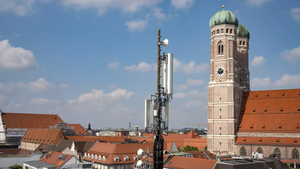
Comcast's recent success in mobile has evidently touched a nerve at AT&T. The telecom giant lodged a complaint with an ad watchdog group about several marketing claims Comcast has affixed to its Xfinity Mobile service. But Comcast is fighting back.
Following AT&T's challenge, the National Advertising Division (NAD) announced it has recommended that Comcast make some changes to its mobile advertising, including:
Modifying claims that Xfinity Mobile is the "fastest mobile service"
Discontinuing Xfinity Mobile's "most reliable," "highest ranked" and "best network" claims
Disclosing clearly and conspicuously that a Comcast broadband subscription is required for Xfinity Mobile
Comcast's Xfinity Mobile service relies on an MVNO (mobile virtual network operator) agreement with Verizon but also offloads traffic on the cable operator's own network of in-home and metro Wi-Fi access points. Comcast is also exploring further mobile data offloads using its own CBRS and 600MHz spectrum. Xfinity Mobile, offered to customers who bundle in Comcast's home broadband service, added a record 365,000 mobile lines in Q4 2022, extending the total to 5.31 million.
Figure 1:  Comcast's Xfinity Mobile service ended 2022 with 5.31 million mobile lines.
Comcast's Xfinity Mobile service ended 2022 with 5.31 million mobile lines.
(Source: Comcast)
In its analysis of the AT&T complaint, NAD found that Xfinity Mobile does have the fastest combined Wi-Fi and cellular feeds, but that those speeds are limited to Comcast's Wi-Fi footprint.
Additionally, NAD determined that "the unqualified superiority speed claim reasonably conveys the message that the benefit is available wherever consumers use their mobile service, and therefore consumers may reasonably take away the message that so long as they have Xfinity mobile service – whether they are connected to cellular or WiFi – they will be able to experience the advertised fastest speeds across Xfinity’s entire mobile network." As a result, NAD recommended that Comcast disclose this "material limitation."
NAD also concluded that the Comcast mobile ads challenged by AT&T "do not adequately inform consumers of the circumstances under which the 'fastest mobile service' claim is true." NAD recommended that Comcast modify its ads to "clearly and conspicuously disclose" that the claim is based on combined Wi-Fi and cellular speeds and that this is true only within Comcast's footprint or when a customer is connected to Wi-Fi.
NAD urged Comcast to discontinue its "most reliable" and "highest ranked" claims "because the evidence in the record was not a good for fit the challenged claims." The watchdog also found that the "best network" claim is "broad and unqualified," holding that Comcast didn't provide evidence to support it.
Appeal underway
According to NAD, Comcast will appeal the organization's decision, arguing that that ads focus on the unique benefits of a service that is delivered through the combination of two networks. Comcast is also arguing that NAD's decision is inconsistent with previous cases addressing similar claims.
This case is just one of several ad fights involving cable operators and mobile operators as the competition for broadband and wireless customers remains heated.
Among recent examples, Comcast and MVNO partner Verizon were involved in a separate case tied to marketing claims for Comcast's 5G service plan when compared to a pair of Ultra Wideband 5G plans from Verizon. In that case, Comcast agreed to modify its ads to more directly disclose the material differences between the services.
Related posts:
— Jeff Baumgartner, Senior Editor, Light Reading
About the Author(s)
You May Also Like












